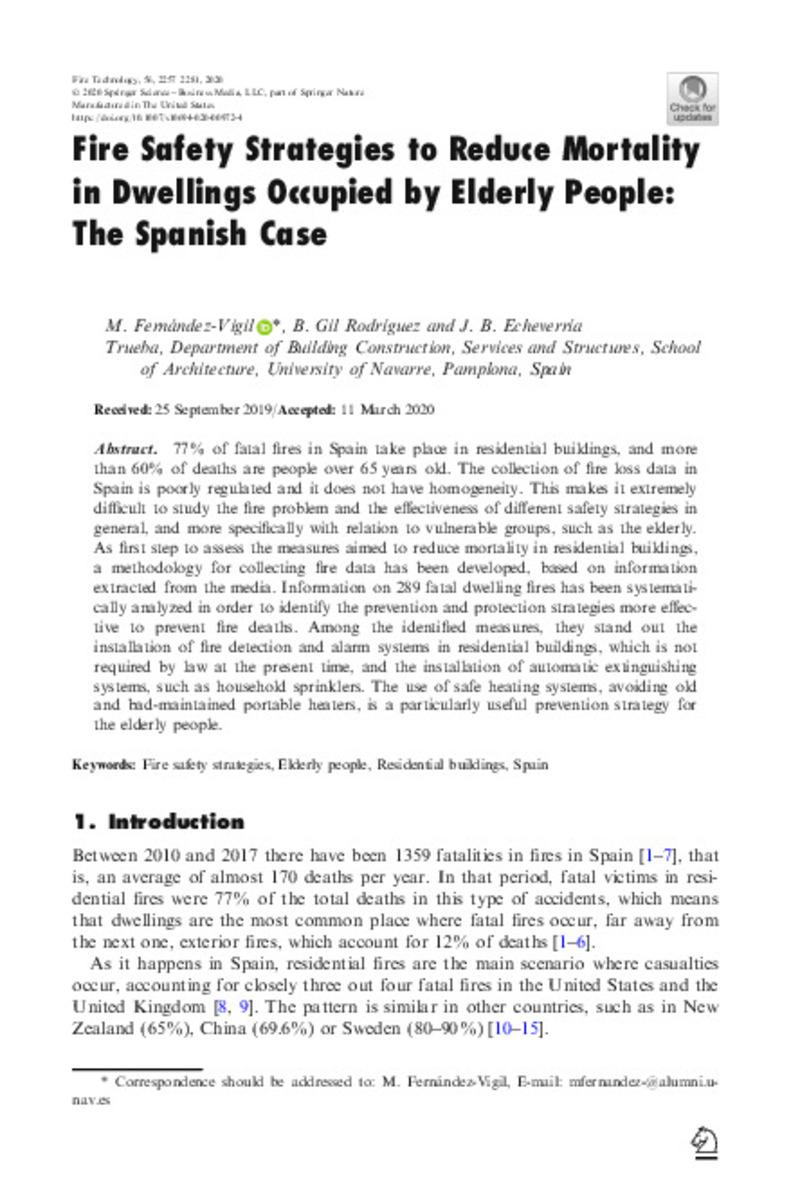Fire Safety Strategies to Reduce Mortality in Dwellings Occupied by Elderly People: The Spanish Case
Keywords:
Fire safety strategies
Elderly people
Residential buildings
Spain
Editorial note:
© 2020 Springer Science+Business Media, LLC, part of Springer Nature
Citation:
Fernández-Vigil, M. (María); Gil-Rodríguez, B. (Beatriz); Echevarría-Trueba, J. (Juan). "Fire Safety Strategies to Reduce Mortality in Dwellings Occupied by Elderly People: The Spanish Case". Fire Technology. 56, 2020, 2257 - 2281
Statistics and impact
0 citas en

0 citas en

Items in Dadun are protected by copyright, with all rights reserved, unless otherwise indicated.







